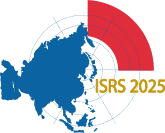 |
Polar from Space: Korea’s Remote Sensing for Cryosphere and Climate ChangeDr. Hyun-Cheol Kim Biography
Dr. Hyun-Cheol Kim received his Ph.D. in Earth and Environmental Sciences from Seoul National University, specializing in satellite oceanography. Since 2007, he has worked at the Korea Polar Research Institute (KOPRI), focusing on Arctic and Antarctic studies using satellite and UAV remote sensing. Since 2012, he has also served as a faculty member at the University of Science and Technology (UST), teaching polar remote sensing. He established the Remote Sensing Group at KOPRI in 2016 and currently leads the Center of Remote Sensing and GIS. His team specializes in cryospheric research using diverse remote sensing technologies, including KOMPSAT, which he was the first to apply to polar science. He has been actively involved in international collaborations and received the Korea Prime Ministerial Citation in 2019 and the International Cooperation Award from the Ministry of Science and ICT in 2024. Abstract
The polar regions are undergoing unprecedented transformations due to global climate change. These changes—such as rapid sea ice decline, glacier retreat, and permafrost degradation—not only affect the polar environment but also have profound implications for global sea levels, weather systems, and ocean circulation. In this context, polar research has become an essential component of global climate science. The Korea Polar Research Institute (KOPRI), the nation’s leading polar research institution, has been at the forefront of monitoring and understanding these changes through advanced remote sensing technologies. Utilizing both satellite data and UAV-based observations, KOPRI has been steadily advancing research in sea ice and glacier monitoring and developing climate indicators based on long-term cryospheric trends. This keynote will introduce the key achievements of KOPRI’s Center of Remote Sensing and GIS, established in 2016 to coordinate and expand Korea’s remote sensing capabilities in the Arctic and Antarctic. The presentation will also highlight KOPRI’s unique international infrastructure—such as its operation of polar research stations and active participation in global scientific networks—which enables Korea to play a leading role in international climate and cryosphere research. Through interdisciplinary science, global collaboration, and open data practices, KOPRI is committed to supporting the international community’s efforts in building resilience against climate change. This keynote will share Korea’s vision for polar science and extend an invitation to strengthen international partnerships in remote sensing and cryospheric research. |
 |
Satellite Remote Sensing Approaches for Coastal Geomorphology and Temporal Mapping in TaiwanProf. Kuo-Hsin Tseng Biography
Kuo-Hsin (Steven) Tseng earned his B.S. in Civil Engineering from National Chiao-Tung University, Taiwan, in 2005 and his Ph.D. in Geodetic Science from Ohio State University, USA, in 2012. He is a Distinguished Professor at the Center for Space and Remote Sensing Research (CSRSR) at National Central University (NCU), Taiwan, and is affiliated with NCU’s Institute of Hydrological and Oceanic Sciences and the Department of Civil Engineering. His research specializes in satellite altimetry, GNSS, and remote sensing applications. He has collaborated with Taiwan’s Ministry of the Interior (MOI) on Electronic Navigational Charts (ENC) and coastal geodetic surveys. In 2024, his work integrating ICESat-2 altimetry with multispectral imagery to derive shallow water bathymetry was featured in NASA’s Early Adopter Showcase. Abstract
Coastal areas are densely populated and subject to various human activities, while the intertidal zones and river mouths support diverse ecosystems. Meanwhile, coastal geomorphology is undergoing amplified changes due to a combination of natural and anthropogenic factors. Understanding the temporal dynamics and current state of land formation is crucial for ensuring sustainable management of these regions. In Taiwan, various satellite remote sensing techniques have been employed to map elevation in coastal zones, enabling the seamless integration of elevation models. For instance, the ICESat-2 laser altimeter, in combination with multispectral imagery from Sentinel-2, maps shallow waters and produces satellite-derived bathymetry (SDB) products. The elevation of intertidal zones is reconstructed using a series of SPOT satellite images captured at varying tidal heights alongside tide models to assess inundation probabilities and actual land formation. Airborne LiDAR-derived Digital Elevation Models (DEMs) provide a static reference for land areas, with temporal changes monitored through the Sentinel-1 PSInSAR time series. Integrating those models from subtidal, intertidal, and upland zones can generate a comprehensive, multidimensional DEM of the entire region, supporting effective planning and management. |
 |
Outline of the Earth Observation Missions in JAXADr. Hironori Maejima Biography
Hironori Maejima earned his B.S. in Electrical Engineering from Science University of Tokyo in 1989, M.S. in Communication Engineering form Tohoku University in 1991, and Ph.D. in Systems Engineering from Keio University in 2012. He is a Chief Senior Officer of Earth Observation Missions, JAXA, and a Lecturer in Yokohama National University. He has experienced lots of the Satellite development projects in JAXA including the Earth observation satellite (ADEOS), the Lunar orbiter (SELENE), the Mercury orbiter (BepiColombo) and the X-ray observatory (XRISM). Abstract
JAXA started its Earth Observation Missions in the 1980s. After two decades of the technology acquisition and validation of the Earth Observation systems in space and on the ground, the demonstration of the utilization has been implemented. The area of utilization has expanded to climate change, disaster monitoring, agriculture, forest and fishery, infrastructure management and so on. JAXA embarked on a seven-year mid- and long-term plan starting this April. We plan to restructure the Earth Observation program with a view to obtaining tangible benefits and promoting social implementation. This talk outlines the JAXA’s Earth Observation Missions in the past, present and future. |


